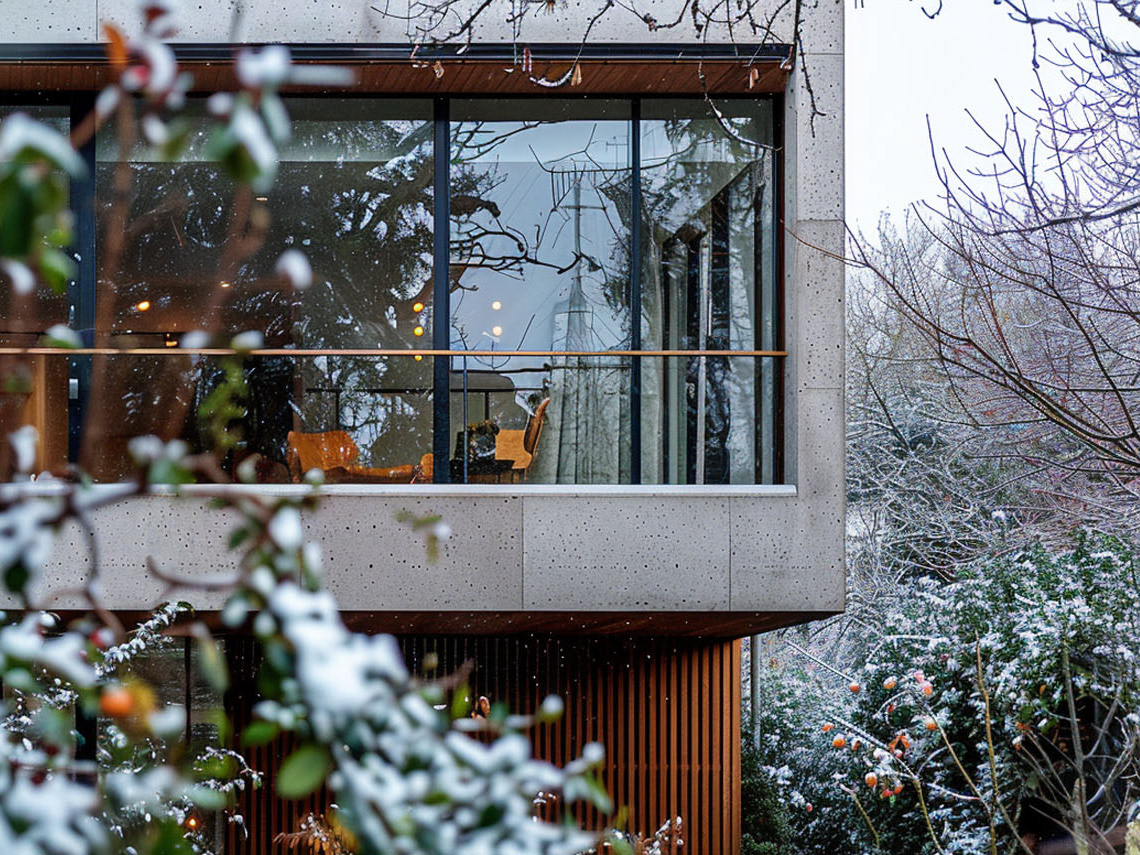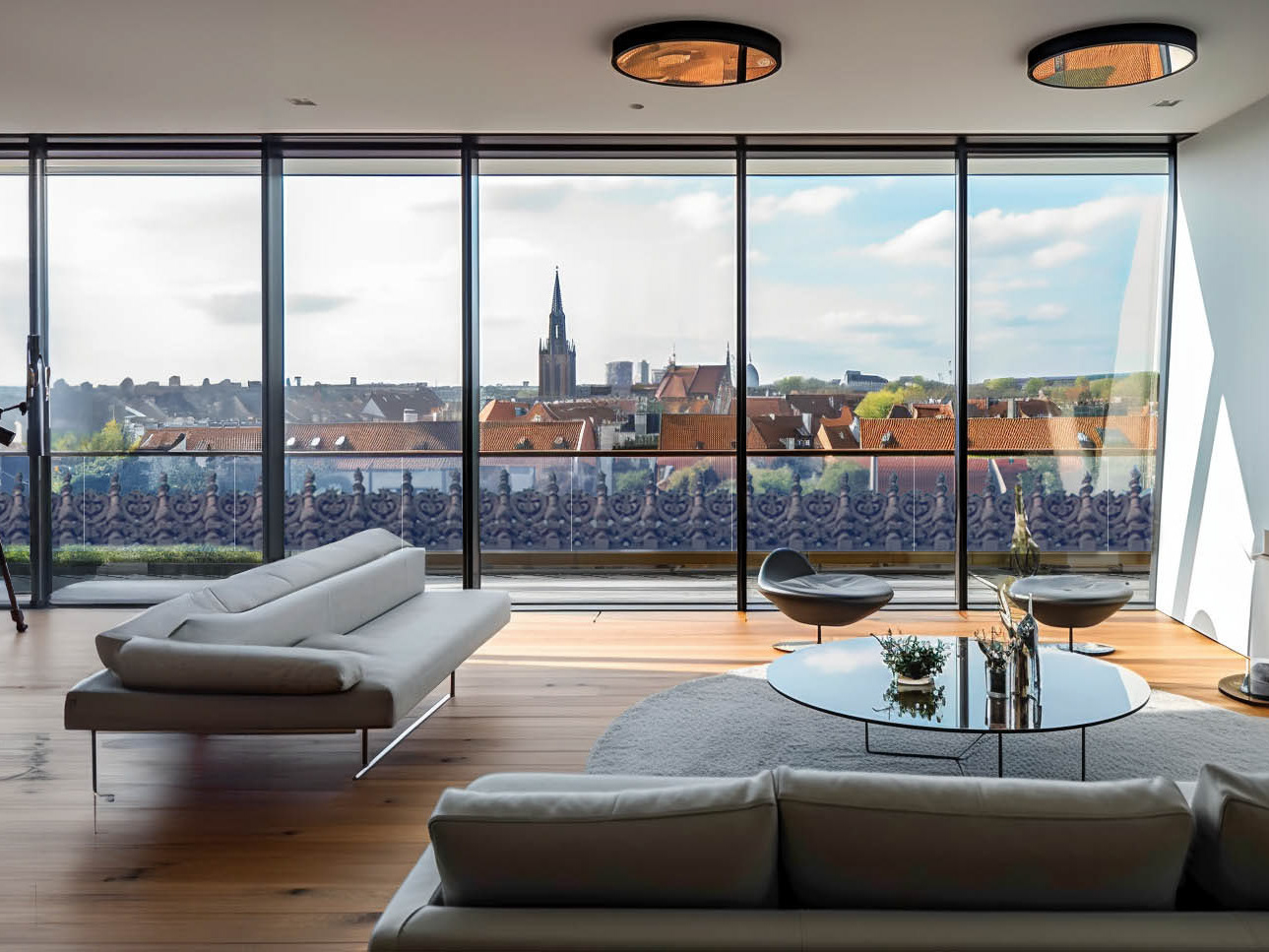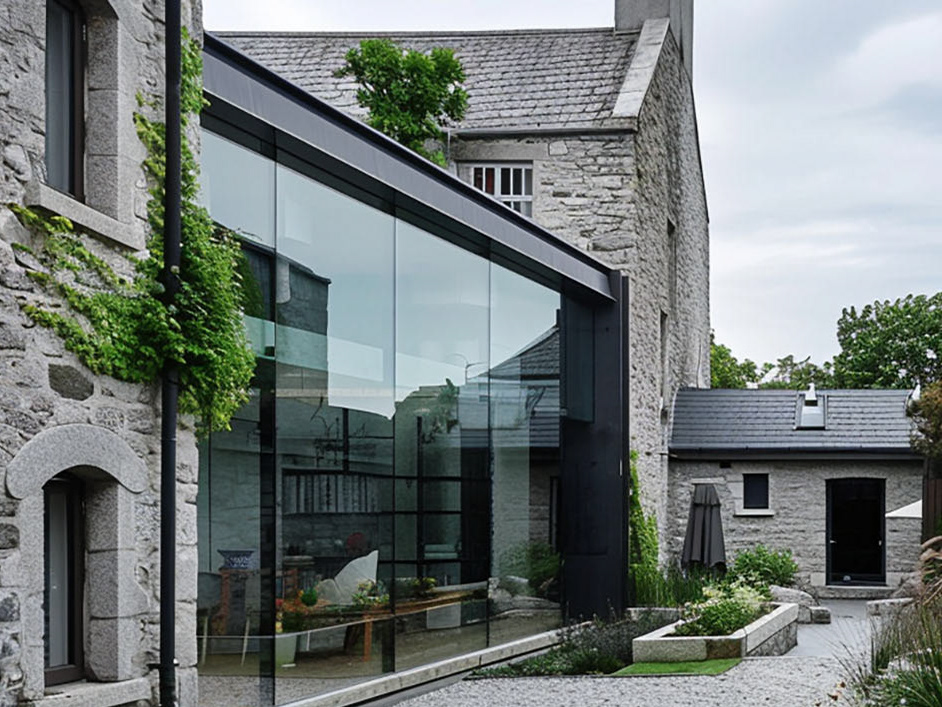Embracing the Future:
Energy-Efficient Design in Architecture.
For nearly two decades, our practice has been deeply committed to the philosophy that architects and designers have a fundamental responsibility to create spaces and objects with environmental integrity at the forefront. This idea aligns with our approach to sustainable architecture, where energy-efficient design is not just a feature, but a foundational aspect of how we shape environments. These environments profoundly influence our daily lives and interactions. Inspired by pioneering research, such as that conducted by MIT researchers, we acknowledge the dual challenge of optimizing both the operational energy used over a building's lifespan and the energy consumed in the production of its materials.
Why Energy Efficiency is Crucial?
The balance between operational energy (used during a building’s life for heating, cooling, etc.) and structural embodied energy (the energy used to create the building materials) is delicate. Advances in technology now allow us to simulate and optimize these factors early in the design process, leading to smarter, more efficient building designs that serve both our needs and those of the environment.
The Power of Computational Design
With the advent of sophisticated computational tools, architects can now explore thousands of design options within seconds, each balanced for energy efficiency and structural integrity. These tools, using genetic algorithms, evolve designs in a way that mimics natural selection, constantly refining and improving the proposals. By integrating these technologies early in our design processes, we can make informed decisions that significantly reduce both operational and embodied energy.
Case Studies and Practical Applications.
Consider the design of long-span buildings like airport terminals or concert halls, which often require large, open spaces free of columns. These structures pose unique challenges in terms of energy and material use. For example, extending a roof to provide shade might reduce cooling demands but increase the structural materials required, thereby raising the embodied energy. Advanced simulation tools allow us to visualize and adjust these trade-offs in real-time, optimizing the design for both energy efficiency and aesthetic values.
Sustainable Strategies for the Modern World
While various well-established standards offer robust guidelines, the essence of climate-responsive architecture lies in the pursuit of cost-effective, economically and ecologically balanced solutions aimed at comfort and well-being. A balanced optimization of these elements is achieved through meticulous site analysis, considering factors such as sun direction, window placement, and natural ventilation. The design process is iterative, involving continuous modelling and analysis to ensure the building is attuned to its local climate and micro-climate.
Sustainable Strategies for the Modern World
Our design philosophy is firmly rooted in sustainability. We employ a variety of strategies to minimize environmental impact:
Passive Design Techniques: Utilizing the building’s orientation, natural light, and ventilation to reduce energy needs.
Sustainable Materials: Choosing materials that require less energy to produce and transport, thus reducing the building's overall carbon footprint.
Renewable Energy Integration: Incorporating solar panels, wind turbines, and other renewable sources to decrease reliance on non-renewable energy.
Smart and Adaptive Systems: Using smart technologies to adjust the building’s operational parameters in real-time, responding to changes in the environment and usage patterns.
A Commitment to Innovation and Sustainability
The shift towards energy-efficient design is not just a technical challenge; it's a fundamental change in how we conceptualize and interact with our buildings. It requires a deep understanding of both the art of architecture and the science of environmental sustainability. As we continue to innovate, the goal remains clear: to design buildings that are not only aesthetically pleasing but also optimal in their energy use and respectful of the resources they consume. This commitment is crucial for fostering sustainable development and ensuring that our designs are both timeless and forward-thinking.
________________________________________
Read Also
________________________________________
________________________________________
JACA
ARCHITECTURE+DESIGN






